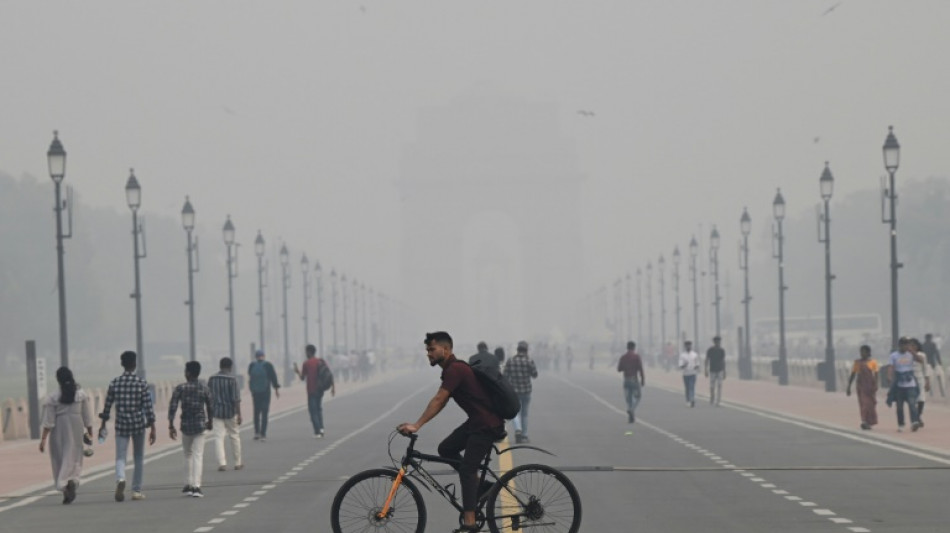
RBGPF
0.1600


Schools were shut across India's capital on Friday as a noxious grey smog engulfed the megacity and made life a misery for its 30 million inhabitants.
Smoke from farmers burning crop stubble, vehicle exhaust and factory emissions combine every winter to blanket Delhi in a choking haze.
The public health crisis has persisted for decades and researchers have blamed the smog for hundreds of thousands of premature deaths across India.
Levels of the most dangerous PM2.5 particles -- so tiny they can enter the bloodstream -- were on Friday almost 35 times the daily maximum recommended by the World Health Organization, according to monitoring firm IQAir.
"In light of the rising pollution levels, all govt and private primary schools in Delhi will remain closed for the next 2 days," chief minister Arvind Kejriwal wrote on X, formerly Twitter.
Delhi, one of the largest urban areas on the planet, is also regularly ranked as one of the world's most polluted cities.
Visible smog is a burden for residents through much of the year, but the problem peaks at the start of winter around the Hindu festival of Diwali.
The holy day coincides with the weeks when tens of thousands of farmers across north India set fire to their fields to clear crop stubble from recently harvested rice paddies.
That practice is one of the key drivers of Delhi's annual smog problem, worsening the impact of vehicle and industrial emissions.
It persists despite efforts to persuade farmers to use different clearing methods and threats of punitive action for those who defy burning bans.
Eye-stinging and lung-burning smog peaks from October to February when colder air traps pollution, with residents advised to wear face masks outside at all times.
"For the next two months it is going to be worst period," Delhi resident Pradeep Dund told AFP.
"We cannot even breathe properly."
- 'Not ideal' -
Authorities regularly announce different plans to reduce pollution, for example by halting construction work, but to little effect.
India is hosting the Cricket World Cup and organisers have banned fireworks at matches in Mumbai and Delhi to avoid compounding hazardous air pollution levels.
Bangladesh are scheduled to play Sri Lanka in Delhi on Monday but cancelled a scheduled Friday training session because of the haze, with little likelihood of the air clearing for their match.
"Some of us developed coughing, so there's a risk factor," Bangladesh team director Khaled Mahmud said, according to Indian daily Business Standard.
"We don't want to get sick. We don't know if things will improve."
India captain Rohit Sharma told reporters Wednesday that the situation was "not ideal" for the tournament.
"Everyone knows that," he said. "Looking at our future generation... it's quite important that they get to live without any fear."
A Lancet study in 2020 attributed 1.67 million deaths to air pollution in India during the previous year, including almost 17,500 in the capital.
And the average city resident could die nearly 12 years earlier than expected due to air pollution, according to an August report by the University of Chicago's Energy Policy Institute.
India is heavily reliant on polluting coal for energy generation. Its per capita coal emissions have risen 29 percent in the past seven years and it has shied away from policies to phase down the dirty fossil fuel.
The smog is also a major public health issue in neighbouring Pakistan, where authorities in the city of Lahore ordered schoolchildren to wear masks during lessons from Thursday to help mitigate health problems.
T.Maeda--JT